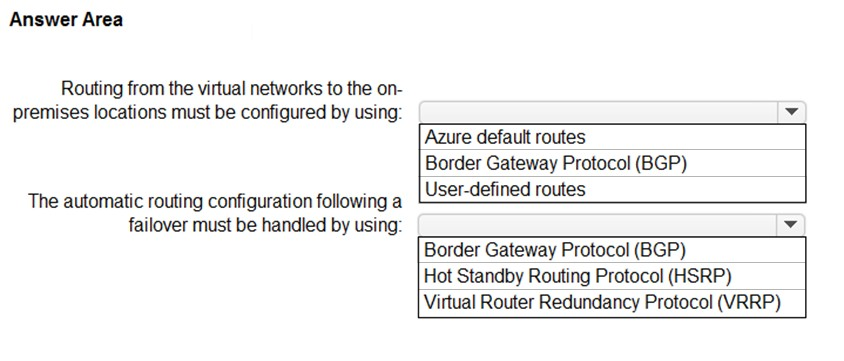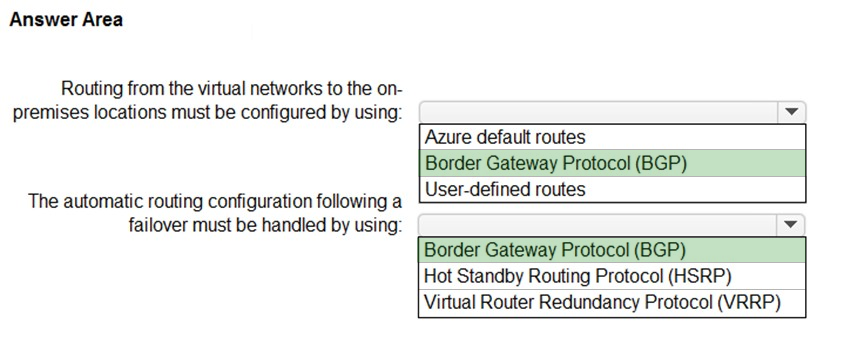

HOTSPOT -
Your company has two on-premises sites in New York and Los Angeles and Azure virtual networks in the East US Azure region and the West US Azure region.
Each on-premises site has Azure ExpressRoute Global Reach circuits to both regions.
You need to recommend a solution that meets the following requirements:
✑ Outbound traffic to the Internet from workloads hosted on the virtual networks must be routed through the closest available on-premises site.
✑ If an on-premises site fails, traffic from the workloads on the virtual networks to the Internet must reroute automatically to the other site.
What should you include in the recommendation? To answer, select the appropriate options in the answer area.
NOTE: Each correct selection is worth one point.
Hot Area:

Azurefox79
Highly Voted 3 years, 7 months agosapien45
Most Recent 3 years, 2 months agonidhogg
2 years, 11 months agoagente232
3 years, 7 months agoducph
3 years, 8 months agosapien45
3 years, 2 months agoleo_az300
3 years, 9 months agordemontis
3 years, 8 months agordemontis
3 years, 8 months agowaqas
3 years, 10 months agosyu31svc
3 years, 10 months agopoplovic
3 years, 10 months agosjai
3 years, 10 months ago